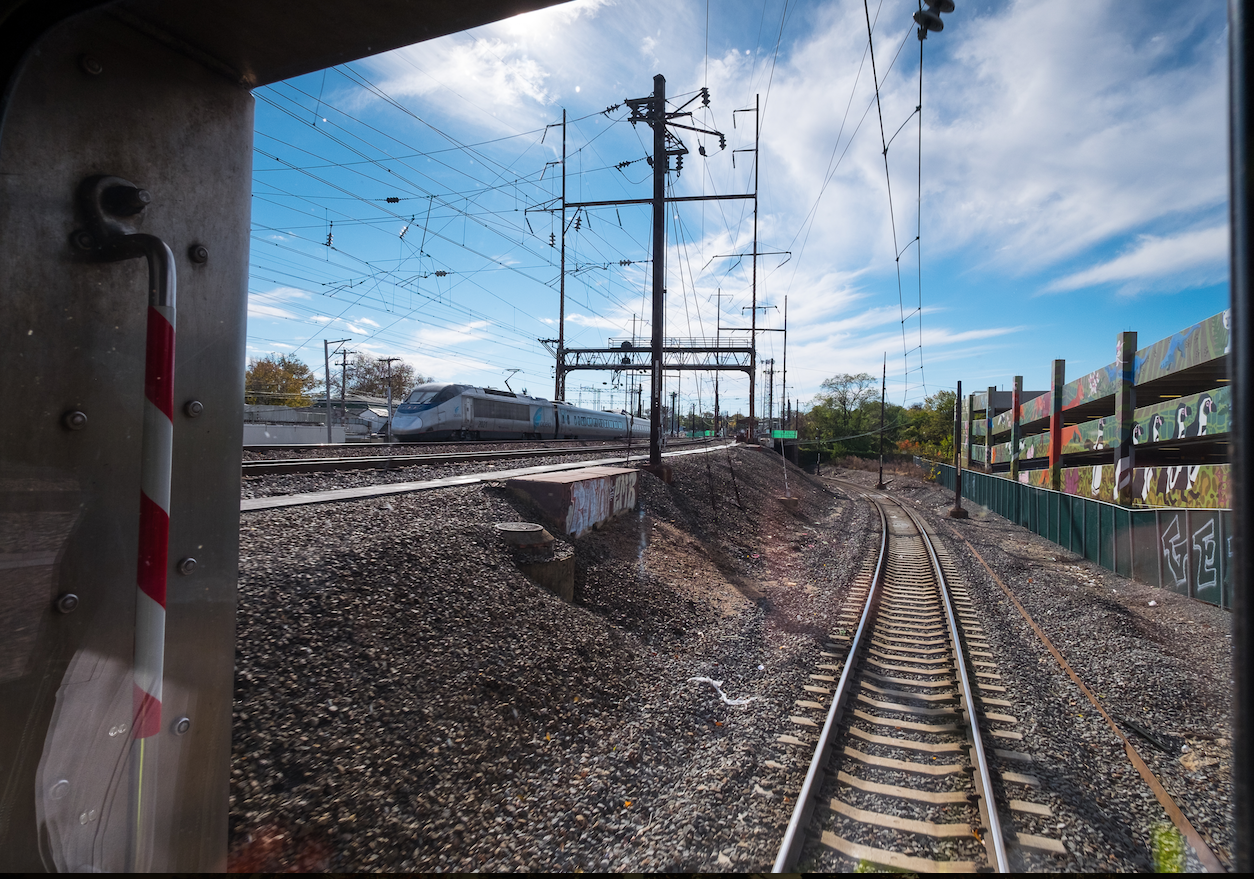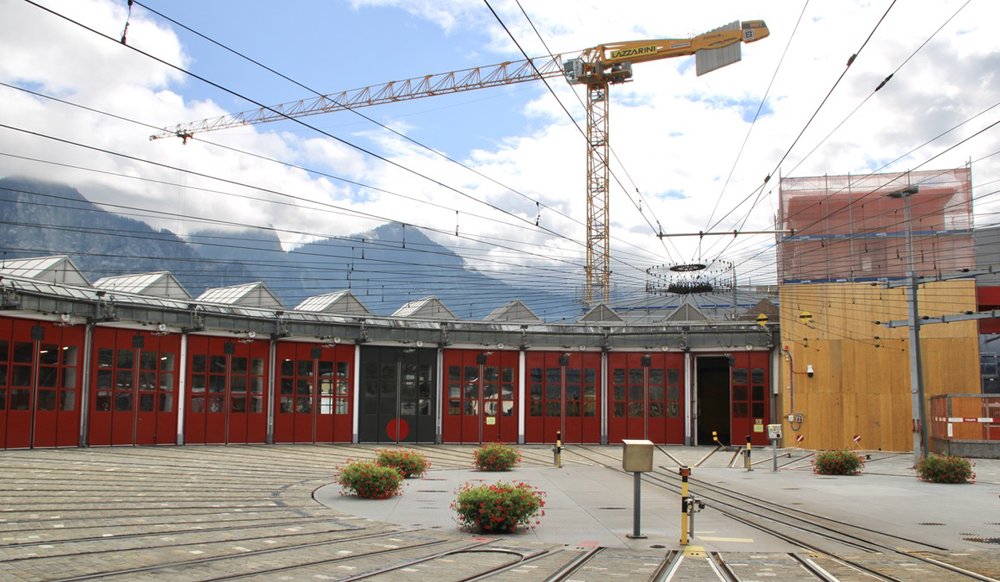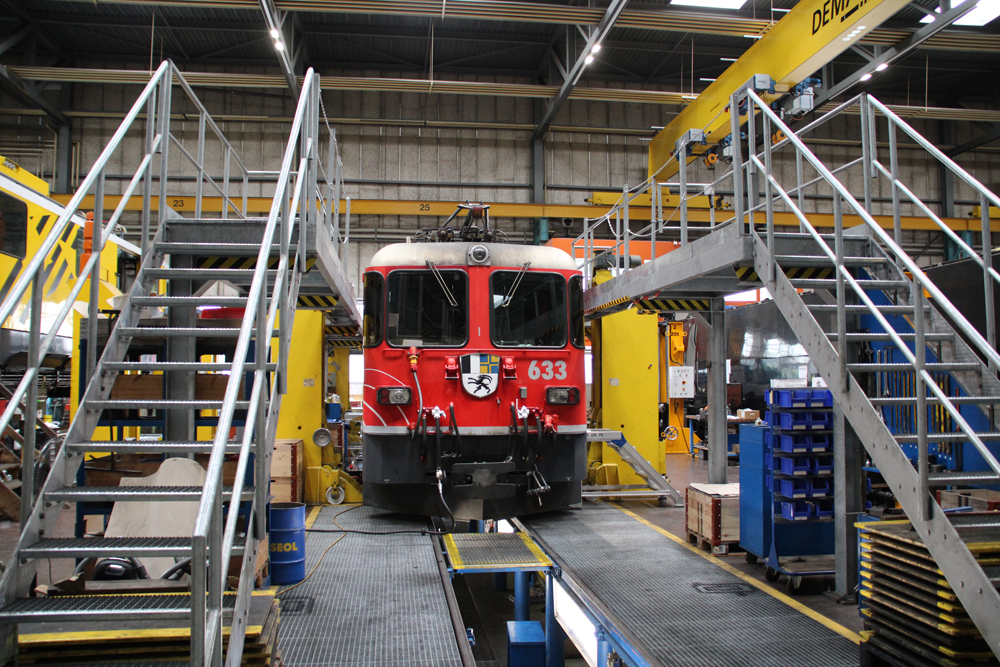Answer: A flyover is grade-separated track arrangement used to keep busy lines fluid by avoiding the need for conflicting crossover movements, often built in conjunction with junctions or yards. Although numerous on heavily traveled railroads in Europe and Japan, and frequently employed by heavy-rail rapid transit, flyovers are relatively rare on most American railroads. Flyovers may be desirable in situations where it is necessary to separate traffic to avoid delays, such as when accessing multiple-track terminals and large yards, or where the nature of the terrain has made it necessary to build tracks on different alignments to allow for the most favorable gradient for trains moving in opposite directions.
Historically, Pennsylvania Railroad was the most prolific user of grade separated track arrangements and numerous examples of former Pennsy flyovers survive on lines operated by Amtrak, Norfolk Southern, and suburban passenger carriers. Former Pennsy grade separations are still used at points along the Northeast Corridor; the busiest and most famous is at Zoo Junction in Philadelphia where the Harrisburg line and other connections interface with the NEC.
Other former examples include approaches to Enola Yard (opposite the Susquehanna River from Harrisburg, Pa.), and the junction of Fort Wayne and Youngstown lines near New Brighton, Pa. The Pennsy’s one-time Long Island Rail Road affiliate has benefitted from grade separations at Jamaica and near Sunnyside Yard, both in Queens, New York, on routes serving New York Penn Station.
New York Central was another multiple-track operator that invested in grade separations. Surviving examples are at Woodlawn Junction in the Bronx on Metro-North where the former New Haven four-track electrified line meets the former New York Central Harlem Division (now MN’s Harlem Line) on the run to New York’s Grand Central Terminal. Several grade separations survive on NYC lines constructed or rebuilt in the 1920s to serve Selkirk Yard south of Albany, N.Y., including junctions at Stuyvesant and Hoffmans, N.Y. The flyover near Guilderland located west of Selkirk yard is comparable to BNSF Railway’s Frost flyover at Frost (between Barstow and Cajon Pass in California) as it doesn’t directly involve a junction and simply enables one main track to cross over the other to help prioritize traffic and keep trains moving to and from the yard.
Southern Pacific double-tracked its route over California’s Donner Pass in the early 20th century, and in several places, the more modern alignment featured easier gradients and produced grade-separated crossings between historic east and west lines.
Toronto Union Station features a flyover on its western approach.
Among modern flyovers are the grade separated crossing at Englewood, Ill., outside Chicago, and both the Redondo Flyover near LA Union Station and one at San Bernardino, Calif., built to help minimize conflicting moves between passenger and freight traffic. — Brian Solomon















The Kansas City Missouri rail network has several “flyovers”, Yes ? Let’s get the local folks to enhance this comment.
UP flyover BNSF in Colton, CA